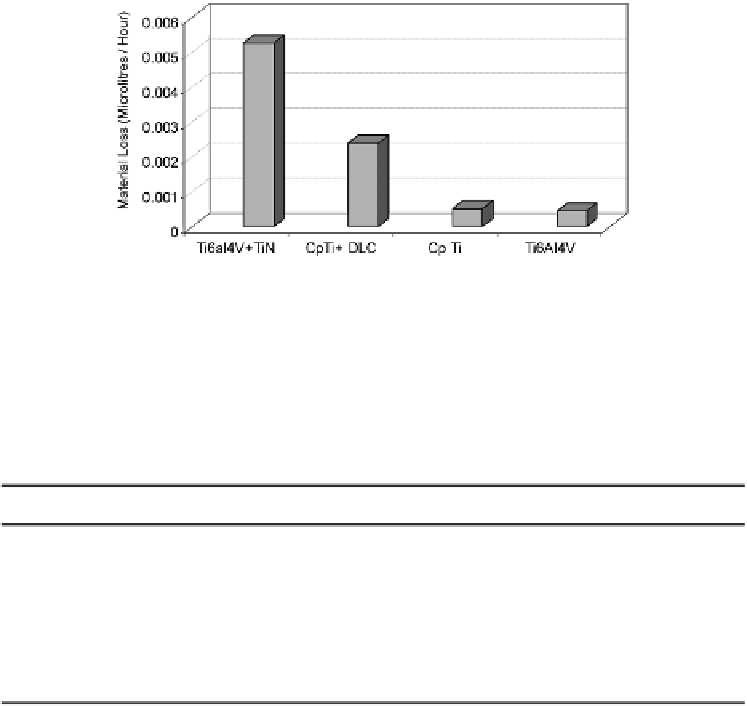Biomedical Engineering Reference
In-Depth Information
Figure 21.5.
Abrasive wear test results: The average quantity of material removed from the
test sample during one hour of run in the test system. The results indicate the relatively high
wear rates for coated samples. This could limit the applications of these coatings in situations
where abrasive or three body wear mechanisms are more prominent such as in orthopedic
applications, which may not be a concern in cardiovascular applications where severe abrasive
wear conditions are not present.
TABLE 21.6. Micro Scratch Test Conditions
Parameter
Details
Indenter
Rockwell (Diamond) 100 μ m radius
Type of test
Linear scratch (progressive)
Loading rate
30 N/min
Start load
0.05 N
End Load
20 N
Scratch length
4 mm
Scratch speed
6 mm/min
detected precisely by means of an acoustic sensor attached to the indenter holder.
The same could be cross-checked and verifi ed using the frictional force observed
on the indenter, sudden changes in the penetration depth profi le as well as with
the help of optical microscopy, by examining the scratch profi le [see Figure 21.6 ].
It is observed that TiN coating on Ti6Al4V has better adhesion properties
compared to DLC on Cp Titanium [see Table 21.7]. But in both cases, the critical
load (LC1) for the initiation of the fi rst crack was better than 4 N, for a 100
m
diamond indenter and is considered as quite good adhesion for most of the adhe-
sive wear conditions. The lower critical loads for DLC could result in high wear
during abrasive wear conditions, which corroborates well with the results obtained
in the sand slurry abrasive wear studies.
μ
21.7.5 Microhardness Measurements
The microhardness measurements were carried out on the same system used for
the evaluation of coating adhesion studies (Micro—Combi Tester, M/s. CSM

Search WWH ::

Custom Search